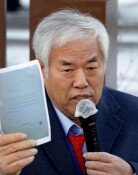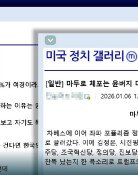[Opinion] 10,000,000,000,000,000
[Opinion] 10,000,000,000,000,000
Posted October. 12, 2004 23:12,
With the value of money continuing to fall, multimillionaires, let alone mere millionaires, are no longer getting the respect they used to. You cant really claim to be rich unless you command at least billions or tens of billions. Even if you spend one million won a day, you only end up spending 365 million over a single year. For this reason, ordinary folks experience of numbers is usually limited to ones, tens, hundreds, thousands, ten thousands, and (occasionally) 100 millions. In fact, most people have never even seen a 10 million-won check.
A number known as gyeong (京) has made its appearance in Korean economic statistics, following the eok (億, 100 million) and the jo (兆, trillion). Just one gyeong has no less than 16 zeroes. The use of this new number is due to the fact that derivative products for domestic financial companies exceeded the gyeong level for the first time last year. Of course, in general, a payment only covers the difference in each transaction, so its not as if gyeongs of won are actually changing hands. Nonetheless, the number is beyond the imagination of most people. Bribes are getting bigger. The administrative capital relocation expenses have jumped from the initial four trillion won to as much as 103 trillion won. One worries that such things may be fueling a deepening insensitivity to large numerical units.
The world of numbers is infinite. Beyond jo and gyeong, theres hae (10 to the power of 20), ja (10 to the power of 24), yang (10 to the power of 28), gu (10 to the power of 32), gan (10 to the power of 36), jeong (10 to the power of 40), jae (10 to the power of 44), and geuk (10 to the power of 48). After that, it fades out into eternity as defined by Buddhism. Hanghasa, or 10 to the power of 52, is derived from the number of grains of sand in the Ganges River. Aseungi is 10 to the power of 56, while Nayuta goes even further, to the power of 60. Bulgasaeui (roughly translated as impossible to conceive of) denotes 10 to the power of 64 and is used to describe something that is too numerous to be counted. Bulgasaeui times 100 million, known as muryangdaesu, refers to the infinite number of souls who reside with Amitabha in the land beyond.
But theres an even bigger number: the googol. Invented by American mathematician Edward Kasner, a googol is the projected sum of all the atoms in the universe and has 100 zeroes after the initial 1. Kasner followed this up with the googolplex, which is 10 to the power of 10 to the power of 100. A googolplex supposedly has more zeroes than one can write as one travels from an outlying star to earth by the furthest possible route. It truly defies the imagination.
Oh Myeong-cheol, Editorial Writer. oscar@donga.com



![[속보]윤석열 사형 구형…내란특검 “전두환보다 엄정히 단죄해야”](https://dimg.donga.com/c/138/175/90/1/wps/NEWS/IMAGE/2026/01/13/133151283.1.jpg)



